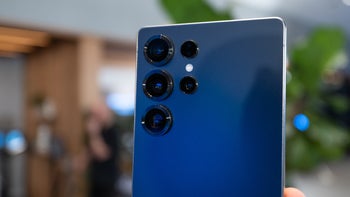Apple seeks to put larger batteries in future iPhone models and in other devices

Apple filed a pair of patent applications related to battery technology innovations. The first patent, titled "Metal Can Battery," reduces the spacing between components on an electronic device. These components surround a battery and with the system mentioned in the patent application, a larger battery could be used inside a device without damaging the components. Right now, there is wasted space designed into a smartphone and other devices since the components can be corroded or face other damage if the battery container touches them.
Apple filed two patent applications for battery-related innovations
In the application, Apple explains how it will get rid of the wasted space inside a device. It would accomplish this by surrounding a battery with housing that is rigid or semi rigid. This housing can be in close proximity to electronic components without damaging them. In one example the electrode is protected by a metal housing hermetically sealed around the electrode at a flange. This would prevent an issue that would damage the electronic components. The damage can take place because often the pouch containing a battery carries a voltage because of the size of the battery which can give the edge of the pouch an electric charge. Reducing the size of the battery is the main fix used now, but that limits the battery life of a device.

Illustration from a patent application filed by Apple that would allow Apple to include larger batteries with its devices
The patent application calls for a flange to reduce the amount of excess material that needs to be placed in the space designated for the battery. Less excess material means that larger batteries can be used in the pouch without worrying that they will electrify the edge of the pouch and damaging electrical components with a mere touch. Less excess material would also allow Apple to use larger batteries in its devices giving them longer battery life without having to make the device larger.
The second patent is called "Methods for Determining and controlling battery expansion," and it discusses a method to help determine when the expansion of a rechargeable battery is greater than a certain threshold. If the swelling of a battery exceeds a predetermined amount, an expansion detector will report this information to "an associated processing unit" that would make changes to the circuitry of the device to charge the swollen battery at a slower rate and using reduced voltage. This would reduce the potential threat of a swollen battery expanding in size.
Or as written in the patent application, "A rechargeable battery package of an electronic device comprising: a rechargeable battery; an expansion detector operably coupled to the rechargeable battery and configured to determine a change in a dimension of the rechargeable battery by detecting a change in a resistance between a first comb element and a second comb element; and a power management unit operably coupled to the rechargeable battery and the expansion detector, the power management unit configured to control an electrical input to the rechargeable battery: wherein: the expansion detector is further configured to send an expansion signal to the power management unit in response to the expansion detector determining that the dimension of the rechargeable battery exceeds an expansion threshold; and the power management unit is further configured to modify the electrical input in response to receiving the expansion signal."
The patent application would make it less likely for a swollen rechargeable battery to continue receiving the amount of energy needed to charge the battery while risking an explosion. A phone owner noticing that the rechargeable battery on his phone is taking longer to charge will still have to recognize this as a sign that there is an issue with the battery that will require it to be replaced. What Apple is trying to do is prevent users from getting hurt and devices from getting damaged by notifying the user, in this case by throttling the charging process, that something is wrong with the battery.
Follow us on Google News












Things that are NOT allowed:
To help keep our community safe and free from spam, we apply temporary limits to newly created accounts: